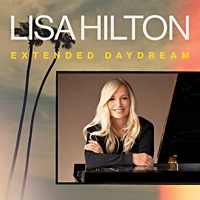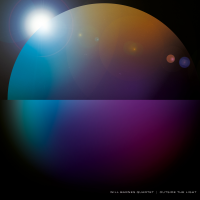Home » Jazz Musicians » Lou Marini
Lou Marini
Often referred to as an “unsung jazz hero,” platinum recording artist, Lou Marini, Jr. is the seasoned soul and adept multi-instrumentalist, arranger, composer, educator, and producer credited with inspiring the origins of a fan-following cult across multiple genres of music.
Making a name for himself as a sideman in various high profile groups, any top New York jazz musician will tell you he’s “one of the absolute best jazz musicians.” The New York based Marini is famed for his chameleon-like adaptability to imagine and perform inventive ideas in jazz, rock, blues and classical music. Describing Lou’s performances, the New York Times said, “(he’s) the focal point of the group…(who) gives the band most of its colors and shadings, and provides it with a strongly melodic lead voice.”
Five time Grammy Award winning arranger / composer Bob Belden had this to say about one of the time-honored contributions from Lou Marini, Jr., “This composition and arrangement reflects Lou’s ability to create exciting, new music that embraces rock and the most advanced ideas of jazz music.” The statement helps illustrate Marini’s ability to inspire and traverse multiple music disciplines.
Popular since the early 1970s, Lou Marini, Jr. continues to be one of the most sought-after sidemen and session musicians on the New York scene. Due in part to his incredible skill and talent of the highest calibre, Marini masters many styles and instruments. He is accomplished on soprano, alto, tenor, and baritone saxes, piccolo, flute, alto flute, bass flute and clarinet.
The ever-present influence of Lou Marini, Jr. is all around you. Jingles, television, radio and concerts all reflect the irresistible, innovative sounds of this veteran performer who electrifies audiences internationally. He truly is one of the industry’s most prolific luminaries who demonstrates a tireless commitment to his craft.
Lou Marini, Jr. is best known as a member of several distinguished bands: Woody Herman Orchestra, Doc Severinson, Blood, Sweat and Tears, The Band, Levon Helm & the RCO All-Stars, Dr. John, Frank Zappa, Saturday Night Live (SNL) Band, The Blues Brothers, Maureen McGovern, Lew Soloff Quintet, Blue Beck with Joe Beck, Eric Clapton, Red House, and the Magic City Jazz Orchestra. He has toured four times each with James Taylor’s Band of Legends and the John Tropea Band. A true blue lover of big bands, Lou has had the honor of performing with some of his childhood idols such as Thad Jones-Mel Lewis and the Buddy Rich Band, the latter with whom he also arranged.
Read moreTags
Lou Marini Speaks His Mind

by David Bixler
Multi-instrumentalist Lou Marini has been visible in American popular music for decades. Woody Herman, Blood Sweat Tears, SNL, The Blues Brothers, and James Taylor are just a few of the iconic names that grace his resume. Throughout his time with these high-profile groups, Lou remains an artist dedicated to his craft. When his touring schedule was erased because of the pandemic, he turned to composing music for large ensemble that will soon be recorded. In this episode of LINER NOTES, ...
Continue ReadingBill Warfield and the Hell's Kitchen Funk Orchestra: Smile

by Jack Bowers
Having no idea what to expect from an ensemble labeled the Hell's Kitchen Funk Orchestra, the game plan must be to advance with caution, as any orchestra with trumpeter Bill Warfield at the helm can't be all bad. After listening, it becomes clear that the game plan was sound and the premise accurate: Smile, the HKFO's second recording, isn't all bad. The question is: did Warfield and the orchestra have its own game plan? If snatching every ingredient within reach ...
Continue ReadingLou Marini: Starmaker

by Hrayr Attarian
Lou Marini's Starmaker is a reflection of the veteran reedman's professional life, with eight originals ranging from jazz, to blues and other related genres. Known by the moniker “Blue Lou," Marini has starred in the classic “The Blues Brothers" and has played with such diverse ensembles as Woody Herman's orchestra, Blood, Sweat and Tears, guitarist/composer Frank Zappa, trumpeter Lew Soloff and singer/songwriter James Taylor. Raw emotionality and effervescent zest permeate all of the tunes as Marini alternates ...
Continue ReadingLou Marini & the Magic City Jazz Orchestra: Lou's Blues

by Jack Bowers
Lou's Blues, an exercise in ultra-modern composing, arranging and blowing by Lou Marini Jr. and the Magic City Jazz Orchestra, may bring a smile to the face of many big-band enthusiasts and leave others shaking their heads in bewilderment. It depends on one's point of view. Marini, whose influences include blues, rock and free jazz as well as more traditional rhythms, harmonies and lyrical devices, lays them all on the table in eight inclusive charts that resist easy appraisal or ...
Continue Reading"Blue Lou" Marini and Misha Segal Release New CD

Source:
Michael Ricci
On March 23, 2010, “The Blue Lou and Misha Project - Highly Classified" was released by saxophonist Lou Marini and pianist / composer Misha Segal. The CD was recorded in Los Angeles, California and in New York City. This CD is the first collaborative recording by Marini and Segal. Lou Marini is best known as a member of several noted bands, including Blood, Sweat and Tears, Steely Dan, the Woody Herman Orchestra, the Buddy Rich Band, The Maureen McGovern Band, ...
read more
Greater St. Louis Jazz Festival Set for April 16-18 with Guests Peter Erskine, Lou Marini, John Pizzarelli, and Jon Faddis

Source:
St. Louis Jazz Notes by Dean Minderman
The Greater St. Louis Jazz Festival has announced its 2009 guest artists, and organizers have booked some well-known musicians this year to serve as clinicians and performers for the three-day event, which will run from Thursday, April 16 through Saturday, April 18.While some details are yet to be announced, here's what's been revealed so far: On Friday, April 17, drummer Peter Erskine along with saxophonist Lou Marini will be the featured performers in a concert at the Blanche ...
read more
~ John S. Wilson, NEW YORK TIMES
"LOU'S BLUES" LINER NOTES
The following is a reprint of the liner notes from the “Lou's Blues” CD, written by Grammy Award winning arranger / composer Bob Belden:
What can you say about an artist whose musicianship is so defined, so well tuned and focused that one may find two or three others on the planet who have the same breadth of experience and imagination. What can you say about someone who, when they are involved in the performance process, are 100% directed to the positive results of the efforts, whether it be a jazz recording or a television commercial, a concert with James Taylor or a jazz club gig with Joe Beck or a CD devoted to his own music It’s all the same. 100% musicianship. 100% taste. 100% honesty. Have I said enough. Now who is it that I’m talking about. Lou Marini, Jr., the son of Lou Marini, Sr. Lou Marini, Jr. is a one-of-a-kind person, a bon vivant, a renaissance man, a connoisseur of the finer things in life; good food, good friends and good music. Lou Marini, Jr. lives in Manhattan’s elegant Upper West Side, a neighborhood that is the last refuge for the sophisticated bohemian. Miles Davis lived ten blocks away
Photos
Music
Smile
From: SmileBy Lou Marini













